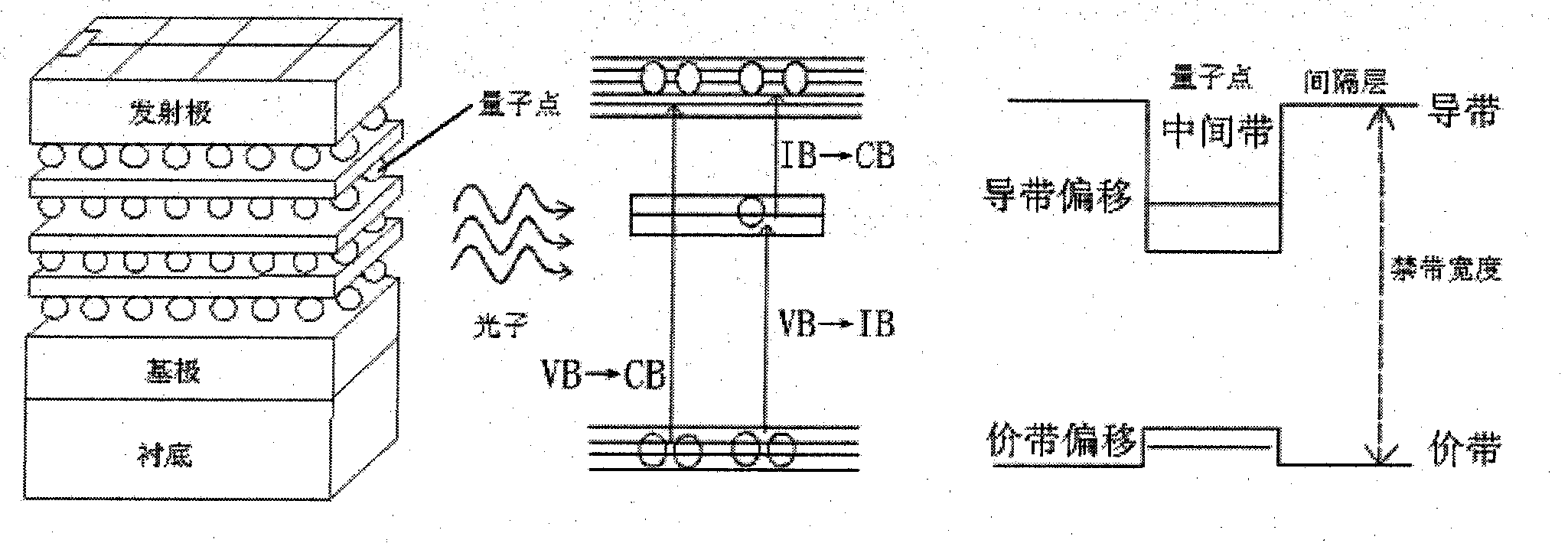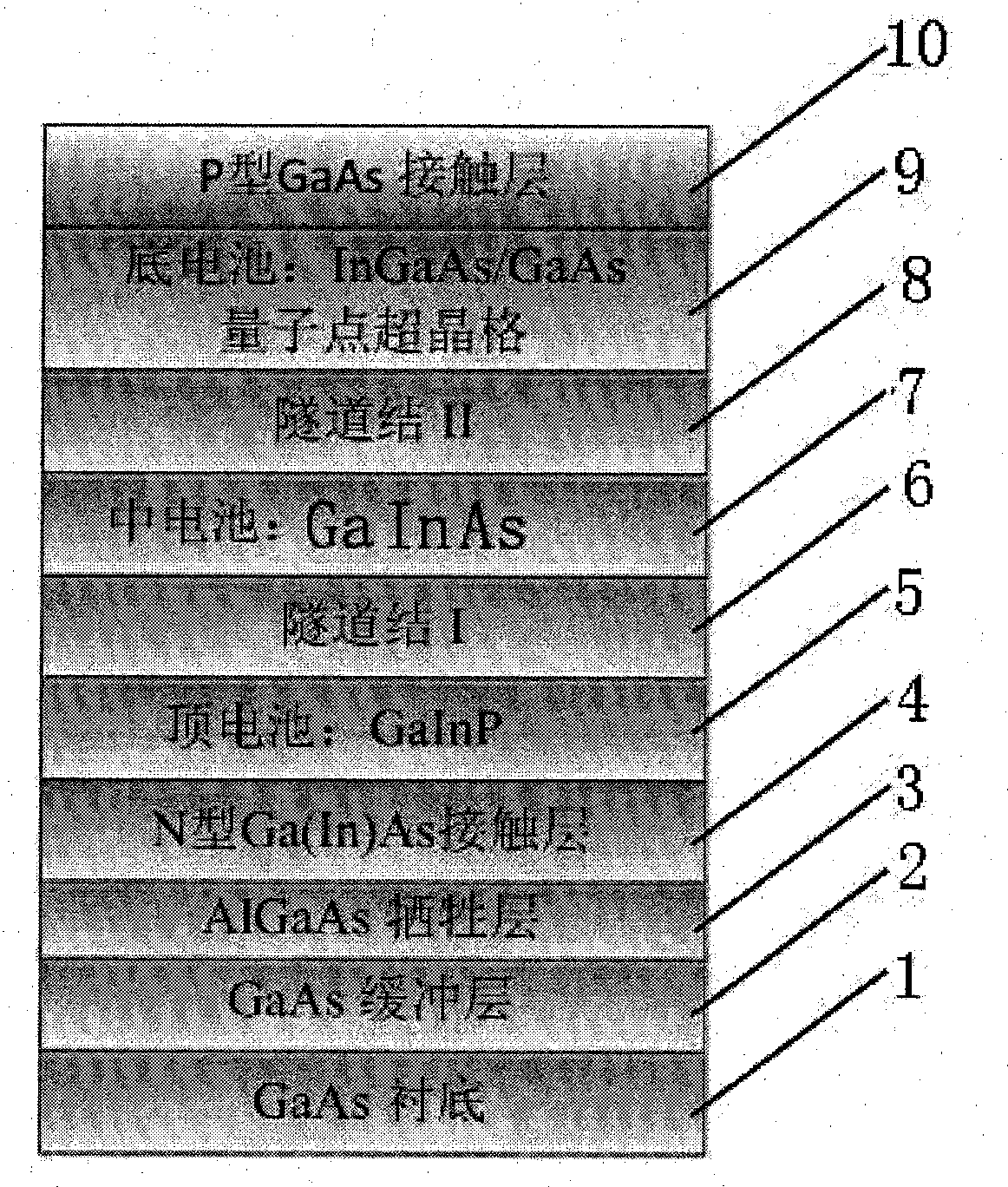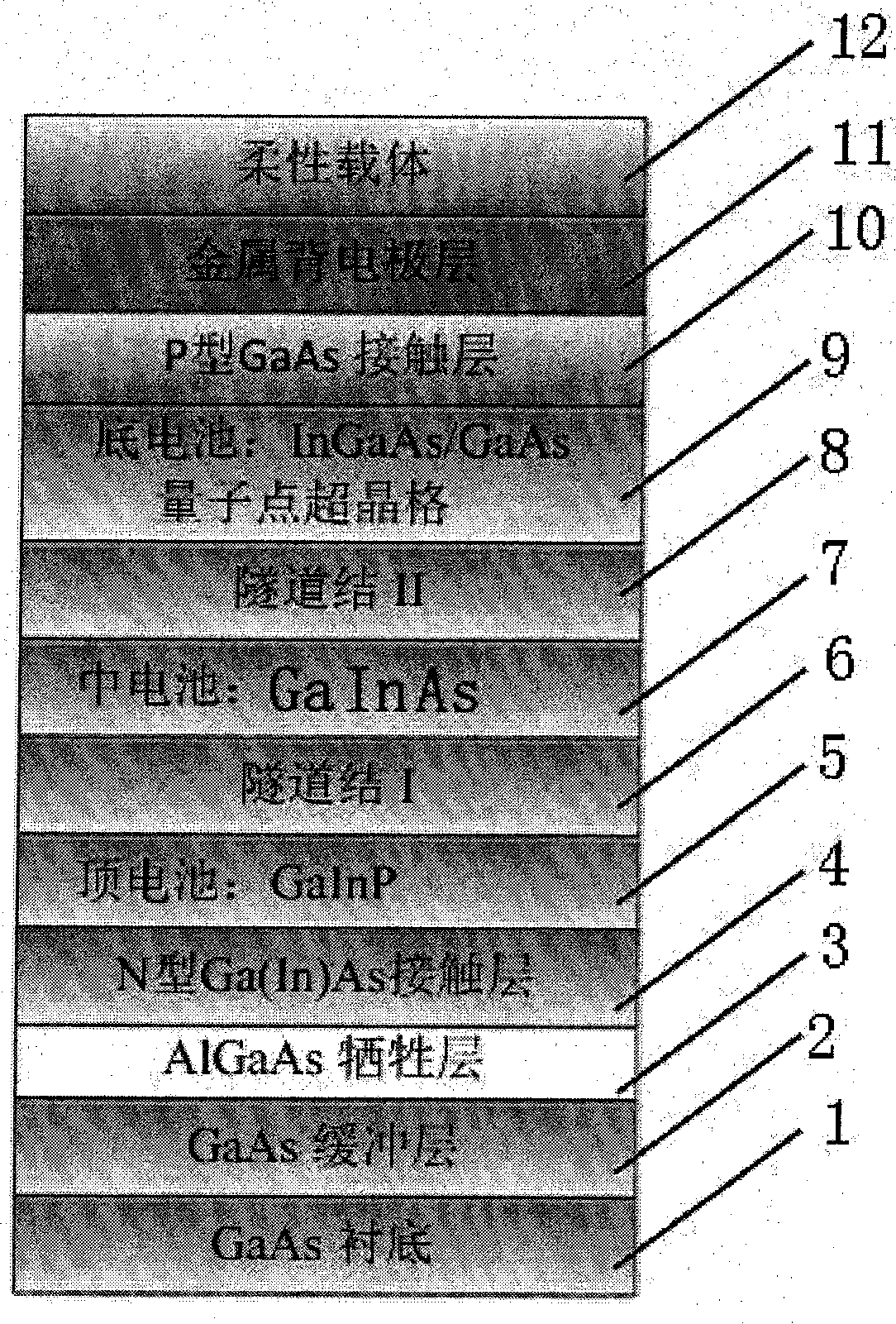Multi-junction solar cell based on semiconductor quantum dot, and manufacturing method thereof
A technology of solar cells and production methods, applied in the field of solar cells, can solve problems such as high cost
- Summary
- Abstract
- Description
- Claims
- Application Information
AI Technical Summary
Problems solved by technology
Method used
Image
Examples
Embodiment 1
[0033] This embodiment provides a method for manufacturing a multi-junction solar cell based on semiconductor quantum dots,
[0034] Include the following steps:
[0035] Step S1: epitaxially grow the buffer layer 2, the sacrificial layer 3 and the solar cell layer on the GaAs substrate 1 in order to produce a solar cell epitaxial wafer. The solar cell layer includes an N-type contact layer 4, a GaInP top cell 5, a tunnel junction I6, and GaInAs Middle cell 7, tunnel junction II8, InGaAs / GaAs quantum dot bottom cell 9 and P-type contact layer 10, the band gap of GaInP top cell 5 is 1.80-1.92eV, and the band gap of GaInAs middle cell 7 is 1.38-1.42eV , the forbidden band width of the InGaAs / GaAs quantum dot bottom cell 9 is 1.0-1.3eV. Specifically, the InGaAs / GaAs quantum dot bottom cell 9 includes a quantum dot superlattice structure and a base and an emitter that are separately arranged on both sides of the quantum dot superlattice structure, and the quantum dot superlattice...
Embodiment 2
[0049] Such as Figure 5 As shown, this embodiment provides a multi-junction solar cell based on semiconductor quantum dots, including a control chip and a plurality of series and / or parallel battery cells connected to the control chip, characterized in that the battery cells are from top to The bottom includes metal back electrode layer 11, P-type contact layer 10, InGaAs / GaAs quantum dot bottom cell 9, tunnel junction II8, GaInAs middle cell 7, tunnel junction I6, GaInP top cell 5, and N-type contact layer 4. It also includes an anti-reflection film 14 and an upper electrode 13 arranged on the N-type GaInAs contact layer.
[0050] Specifically, the InGaAs / GaAs quantum dot bottom cell 9 includes a quantum dot superlattice structure and a base and an emitter that are separately arranged on both sides of the quantum dot superlattice structure, and the quantum dot superlattice structure includes at least one layer of In x Ga 1-x As quantum dot layer, and set in In x Ga 1-x G...
PUM
| Property | Measurement | Unit |
|---|---|---|
| Thickness | aaaaa | aaaaa |
| Lattice constant | aaaaa | aaaaa |
| Thickness | aaaaa | aaaaa |
Abstract
Description
Claims
Application Information
 Login to View More
Login to View More - R&D
- Intellectual Property
- Life Sciences
- Materials
- Tech Scout
- Unparalleled Data Quality
- Higher Quality Content
- 60% Fewer Hallucinations
Browse by: Latest US Patents, China's latest patents, Technical Efficacy Thesaurus, Application Domain, Technology Topic, Popular Technical Reports.
© 2025 PatSnap. All rights reserved.Legal|Privacy policy|Modern Slavery Act Transparency Statement|Sitemap|About US| Contact US: help@patsnap.com



